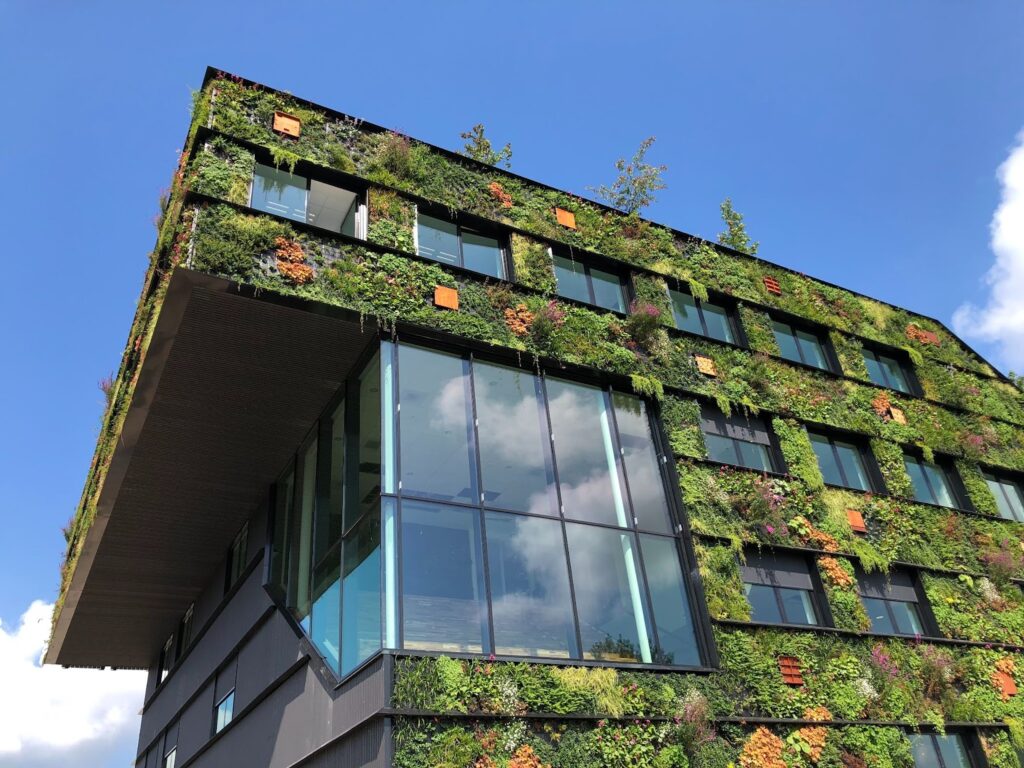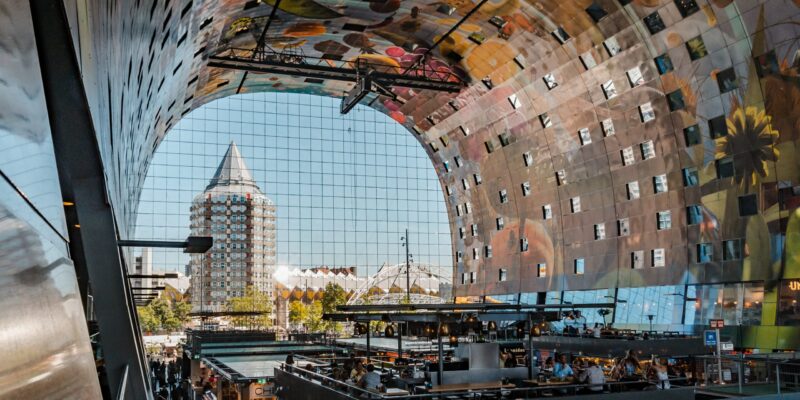Circular procurement in construction: laying the foundation for sustainable success

The Netherlands has made national and international agreements to drastically reduce its CO2 emissions. An important part of this is emissions in construction, a sector with a large impact on climate and environment. To lower this impact and achieve the climate goals, circular procurement is a good strategy.
Gerben Hofmeijer, sustainable procurement advisor at expertise center PIANOo, explains all about the challenges and opportunities for the construction sector.

What is your definition of circular procurement within construction?
“To me, procurement in construction mainly occurs on two levels: on the level of an entire project and of a raw material for a structure. At the first level, it’s about purchasing buildings that are designed to be circular, so that you can easily take them apart later. To then rebuild the buildings elsewhere.”
“And then there’s the side of the raw materials or building materials side, where the goals is to use as many reused and ‘biobased’ as possible. For example: wooden walls or bricks from a building that is being dismantled (a so called donor building) instead of using brand new bricks.”
What makes circular procurement so important in construction?
“We really need to make construction more sustainable, because the sector consumes plenty of raw materials. Especially with buildings, where you’re dealing with very large volumes and numbers, that’s important.”
“It’s good to know that in construction we’re roughly talking about two different things. You have civil engineering on one hand. That’s roads, levees and sewers, for example. The second component of construction consists of all the buildings in which you live or work: civil and utility construction. The number of structures in civil engineering is smaller than in civil and utility: there are, of course, many more homes and offices than there are locks and dikes, for example.”
“But there is another difference that’s even more important: the chains in both sectors differ considerably. In the civil engineering sector, the chains are shorter: in most cases there is a government that is the client of the contractor. That contractor, in turn, has a straightforward production chain behind them.”
“In civil and utility, there are many more potentially involved parties, for example also housing associations, developers, investors and the residents themselves. The request for a contract usually does not originate from one party. These chains are therefore more difficult to comprehend. That complicates a clear overall approach to circular procurement in civil and utility.”
For an example of circularity in civil engineering, see the case of the Cruquiusbrug in Noord-Holland, the Netherlands.
And what are the advantages of circular construction?
“Circularity can make construction faster and more flexible, using modular building. That means production takes place in a factory. Basically, construction kits are made at a fixed location, so that you can avoid all the pollution, delay and disturbance of different construction sites. That also makes construction cheaper in the long run. And in addition, you get fewer construction mistakes on site, which lowers the costs.”
What are the challenges when implementing circular procurement?
“Both the sectors of civil and utility and civil engineering operate with guidelines and standards. There is little room for choice: many sizes are the same, so everyone can build on them. The disadvantage of this is that it’s still difficult to come up with innovative and sustainable alternatives. Moreover, those guidelines and standards were written in the days of the linear economy. Few parties deviate from that. The current guidelines stand in the way of innovation.”
“In addition, we do not yet have a system for reuse in construction. It’s only now that we are working on how to maintain a building in a circular way to extend its life span. An example of this would be: how do you maintain a window frame in such a way that after dismantling the building you can immediately reuse the window frame somewhere else. We need frontrunner projects to show how it can be done, for example, how you demolish a building in a circular way. Veras, the industry association of demolishers, is also working on this.”
Circular frontrunners in the construction industry
- “An example of a circular building is the temporary court in Amsterdam. That is a so-called demountable court, deliberately built to be detachable. The building was taken apart and moved to Enschede, where a rebuild of the building is taking place.”
- “Architectural firm RAU is truly a leader among designers. They look at the entire life cycle, materials and maintenance of a building in design projects. See, among others, Sporthal ‘het Spectrum'”Architectural firm RAU is truly a leader among designers. They look at the entire life cycle, materials and maintenance of a building in design projects. See, among others, Sporthal ‘het Spectrum‘”.
- “One of the clients leading the way is Alliander. Alliander Amsterdam-Westpoort, which is largely made of wood. The building is made modular and easily adaptable to future needs.
- “It is also very important to share knowledge about circular construction. CBCI is an example of a leader project where technical, financial and procurement knowledge have been brought together.”
What criteria should you take into account when selecting circular suppliers?
“Clients and suppliers have to work with the environmental cost indicator. There is legislation for this. You have to meet the score for the Environmental Performance of Buildings. This is about the sustainability of the building you have built, not about energy consumption. Other criteria are the percentages of bio-based raw materials and the percentage of reusage.”
“Several organizations are working on measurement methods for determining the circularity of a structure. Examples are the Building Circularity Index, the Index of Detachability and ‘Het Nieuwe Normaal‘. They may not all be suitable for procurement procedures, but it’s still interesting to take a look and find out what’s going on.”
What trends and developments do you see in circular procurement in the construction industry? And how do you see the future of sustainability in the sector?
“Circularity will not be optional. The standards and requirements to design, build, demolish and use circularly will become increasingly stringent. Both by legislation from the EU and the Dutch government and by mutual agreements.”
“I am hopeful about circular procurement. The impact of construction is huge, so there are also opportunities for new concepts that move us away from a linear economy. If you are interested in circular procurement you can join several buyer groups. The buyer group Circular Construction Materials (guided by PIANOo,) is a good starting point for buying organizations within construction that want to take steps. This buyer group will start soon. There is a lot of information available on the subject, so feel free to look around for what suits you.”


